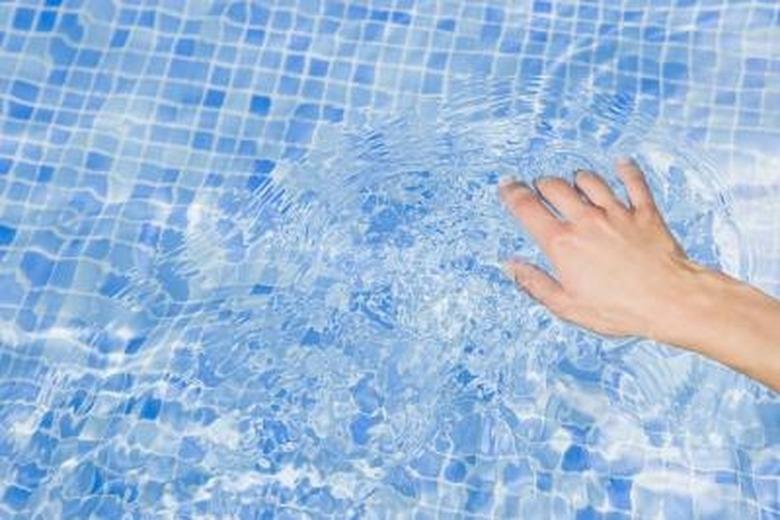How To Troubleshoot A Hayward Chlorinator
Nothing is complicated about a Hayward chlorinator: It's basically a sealed cartridge containing a chlorine supply through which your pool water passes. It has no moving parts, so not much can go wrong. The main problem that pool owners encounter is leaking because of a worn O-ring in the lid. The unit can clog with scale, but it won't if you regularly clean it. Clogs can also occur in the control valve when you vacuum the pool, and airlocks can develop inside the cartridge. Clogs and airlocks restrict water flow, and the pool chlorine levels will fall.
Four Hayward Models
Four Hayward Models
Hayward offers four chlorinator models–two for in-ground pools and two for above-ground pools. The CL 110 (above-ground) and 220 (in-ground), are designed to be installed in line with the pool circulation system. If you have one of these models, it should be installed right after the pool heater or–if you don't have a heater–after the filter. The other two, the CL 100 (above-ground) and 200 (in-ground), are designed to bypass the heater and filter. Water comes into the chlorinator directly from the pump and reenters the main circulation pipe after the heater or filter. All models have a check valve to ensure that water flows only one way.
Each Hayward chlorinator has a removable lid that allows you to drop in a slow-release Trichlor chlorine tablet. It also has a flow-control valve that allows you to adjust the flow of water. Using this valve, you can regulate the flow of the water through the chlorinator if the chlorine level in the pool rises too high or falls too low..
Chlorine Concentration in the Pool Is Too Low
Chlorine Concentration in the Pool Is Too Low
If you can't maintain a minimum chlorine level of at least 1 part per million in the pool, that could signify a problem with the chlorinator, but before checking that, make sure the pH and cyanuric acid (CYA) levels in the pool are where they should be. If the pH is too high (above 7.8) or the CYA level too low (below 20 ppm), the chlorine concentration will probably remain low, even if the chlorinator is working properly.
Once you've determined that the chlorinator isn't putting out enough chlorine, try adjusting the flow control. The maximum flow setting (10) produces the most chlorine. If the dial is already set to maximum, the pool filter may be restricting flow, so try cleaning it. When all else fails, you may have to remove the chlorinator lid and manually clean the screen inside it.
Warning
- Run the pump to allow water to flow through the chlorinator for a minute or two before opening it. This releases the build-up of dangerous chlorine gas inside the cartridge.
- Before opening the chlorinator, turn off the pump and the flow control on the chlorinator, and wait a minute for the pressure to subside.
- Never stand directly over the chlorinator immediately after opening it.
The Lid Is Hard to Tighten or It Leaks
The Lid Is Hard to Tighten or It Leaks
The O-ring on the inside of the chlorinator cover wears out after a certain amount of time and becomes distended. If you have trouble replacing the lid or the unit leaks, you should replace this O-ring. You can order this part from the manufacturer. If you have a CL 100 or 110, you need part number CLX110K. If you have a CL 200 or 220, you need part number CLX200K. Always use genuine parts from the manufacturer to ensure a proper fit.
To prevent problems with O-ring distension, it's a good maintenance practice to lubricate it with silicone lubricant every time you open the lid to add chlorine tablets.
The Control Valve Is Clogged
The Control Valve Is Clogged
If you forget to close the control valve before vacuuming the pool, debris can pass through the chlorinator and get lodged in the valve. This reduces flow through the device and may cause the chlorine level in the pool to fall. To clear the valve, remove the lid; take out the chlorine tablets using tongs, and then use the tongs to remove sludge from the bottom of the chlorinator. Remove the screen, and hose it down.
The Chlorinator Has an Air Lock
The Chlorinator Has an Air Lock
An air lock inside the chlorinator can also reduce flow and chlorination. To clear an air lock, remove the lid, then turn on the pump and allow the chlorinator to fill with water. Turn off the pump; replace the lid, and turn the pump back on again.
